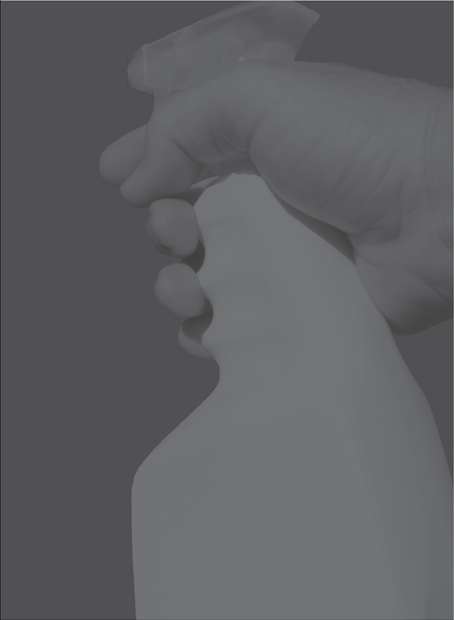

Have you ever accidentally put a jumper in the washing machine and found it will now only fit a twelve-year-old? I have. Do you know what to do if you burn a pan, aside from chucking it out? I do. What do you do if your lovable pooch has a mishap on your white wool carpet? I know.
The good news is that there are solutions to these and many other problems that occur in and around the home, and this book will show you how to fix them. It also offers guidance on the correct way to do all those things you’re not really quite sure how to do. Things like how to vacuum properly, how to organise your wardrobe, and the best way to wash dishes.
This book will also give you the confidence to walk past those expensive cleaning products in the supermarket. Because we know less and less about cleaning, advertisers can play on our fears of not being quite clean or hygienic enough. We will buy an overpriced product that promises instant cleaning because we think it could rescue us from becoming a social pariah. Well, there’s no need to be seduced any longer. You will learn to love bicarbonate of soda. Vinegar won’t just be part of a salad dressing. And here’s something you won’t hear about in one of those gleaming white ads on TV: the best cleaners are water and sunshine.
This book is a room-by-room guide to your house. There’s information on how to care for and fix just about anything that can go wrong in each room. The advice is set out like a cookbook so you can see which ‘ingredients’ or cleaning products you’ll need before following the ‘recipe’ or cleaning process. You’ll also find real-life questions from people who’ve called me when I’ve appeared on radio.
There are a couple of tricks with stain removal. Firstly, don’t panic and put something on the stain that could make it worse. Work out what’s in the stain. Then work out what the solvent is. If there are several components to the stain, you must remove the protein part first, then fats, then any chemical or biological dyes, and then any resins or glues. The way to work this out is to remember that proteins are anything animal or seed based, fats are greasy between your fingers, and resins and glues are not water-soluble. If you’re not sure, clean with cold water first, then use hot water, then any solvents.
You’ll read a lot about ‘blood-heat water’ in the book. This is lukewarm or warm water. The way to test the temperature is to put the water on your wrist; if you can’t feel it—if it’s not too hot or too cold—it’s blood heat.
When using vinegar, you’ll get a better result if you use cider vinegar on hard surfaces and white vinegar on fabrics or white marble.
Dry-cleaning fluid is the same thing as white spirits or Murlex, which is a brand of dry-cleaning fluid.
When you come across the two-sponge method for bicarb and vinegar, it means that you dip one damp sponge in bicarb and another in vinegar, then lay the vinegar sponge over the top of the bicarb sponge and squeeze the two together as you clean. As an alternative, if you’re working with an intricate surface, make a paste of bicarb and water to the consistency of soft butter. Paint it over the surface with a cloth, leave it to dry and then polish off with a rag dipped in vinegar.
And if you’re feeling disheartened while cleaning or tackling that stubborn stain that just won’t shift, just think about the Exxon Valdex disaster when thousands of litres of oil spilled into an Alaskan harbour. Your disaster will never be as bad!